
When you encounter a vocabulary word with which you are unfamiliar, what do you do? Use the context clues to determine the word's meaning. In addition to the great context clues worksheets on this page, check out this free context clues game that I made. Students learn hundreds of challenging vocabulary words while playing a fun climbing game.
I used the context clues worksheets on this page to help my students in the classroom. I am sharing them with you in the hopes that they will help you as well. The words have been selected from texts recommended by Common Core. These context clues worksheets have been divided into three levels:
Context Clues Worksheets by LevelThese are the easiest context clues worksheets. These worksheets were designed to help struggling students or students in lower grades. They were written to help students reading at a 3rd to 6th grade reading level. Be sure to preview all materials before using them in your classroom.
Context Clues Worksheet 1.1This level one context clues worksheet covers 12 words that may be challenging for beginning readers. Students determine each words meaning based on context and then explain their answers.





This level one context clues worksheet features twelve more context clues problems for students with beginning reading skills.





Here are twelve more level one vocabulary words used in context rich sentences. Students will determine the meaning of the word based on its use and explain their answers.
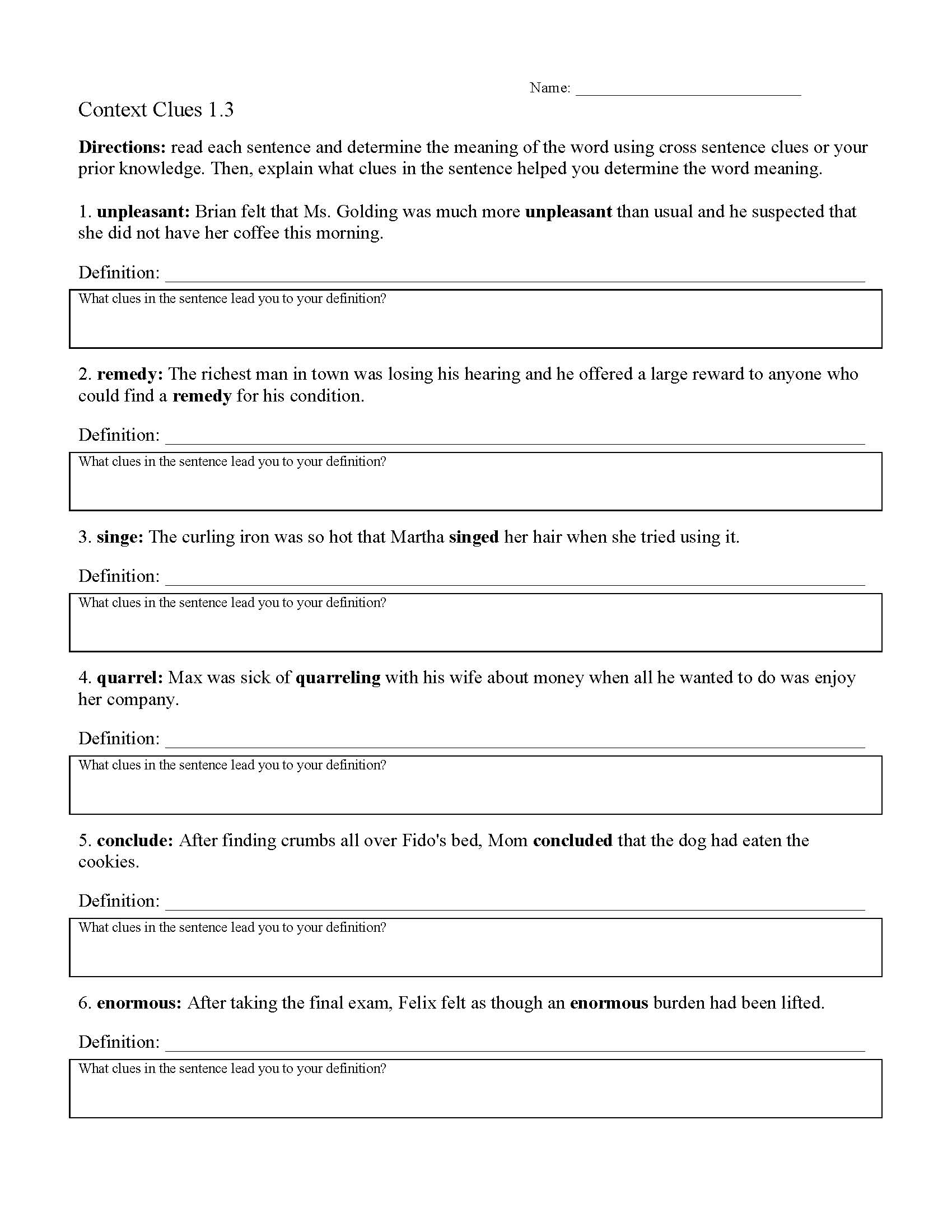




Here is another double-sided context clues worksheet. This one has twelve more level one vocabulary words. Remember, level one is the easiest. Check out level 2 or 3 if this worksheet is too easy.
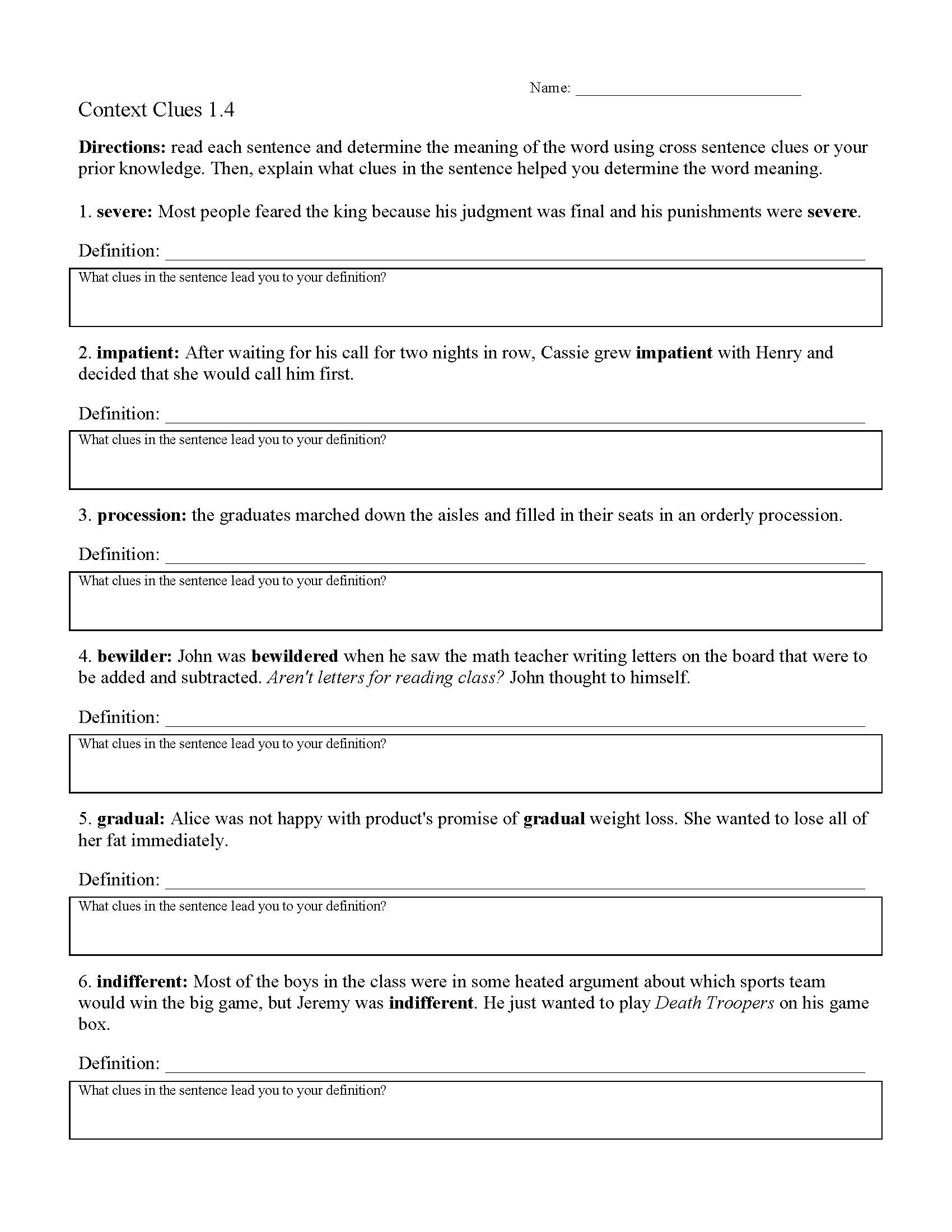




Here's another double-sided worksheet to give your students more practice with context clues. It features twelve level one vocabulary words. Students define the word based on how it was used in a sentence and then explain their answers.
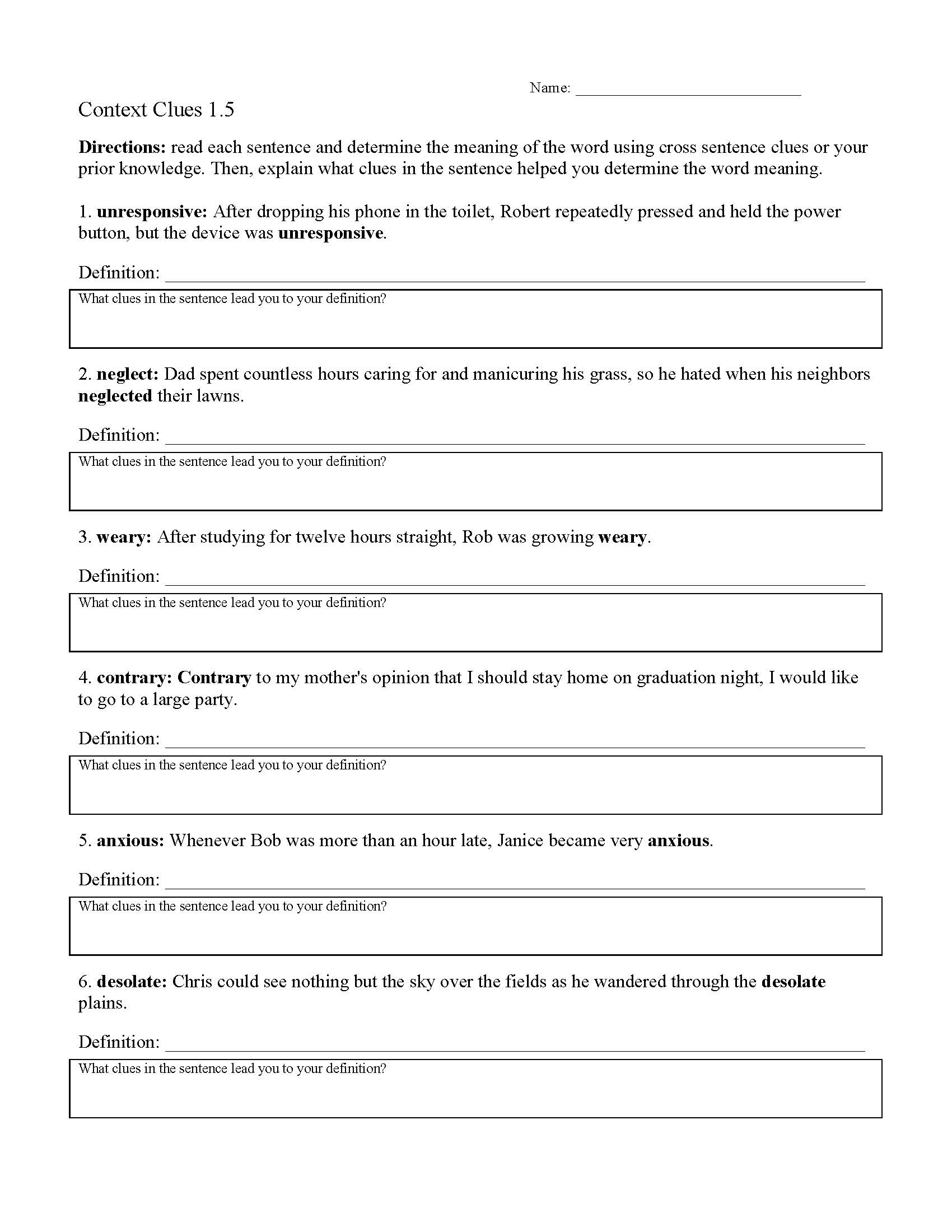




Here is yet another context clues worksheet to help students master this essential reading skills. This worksheet has 12 level one vocabulary words. Students will determine the meaning of the bolded word in each sentence based on context. Then they will explain their answers.





This is the seventh level-one context clues worksheet. If you or your students can handle this task, perhaps it's time to move to level two. This worksheet features another 12 vocabulary words. Students read the sentences and figure out what the bold word means based on context. Then they explain their answers.





These worksheets were designed for students with intermediate reading and vocabulary skills. They are written for students reading at a 5th to 8th grade reading level.
Context Clues Worksheet 2.1Here's the first level two content clues worksheet. Level 2 worksheets contain vocabulary and use sentence structures that are more difficult than level 1 context clues worksheets. This worksheet features 12 tricky vocabulary words used in context-rich sentences. Students figure out the meaning of each word based on use, then they explain their answers.





Here are twelve more moderately difficult problems. Students read each sentence and determine the meaning of the bold vocabulary words by using cross sentence clues.
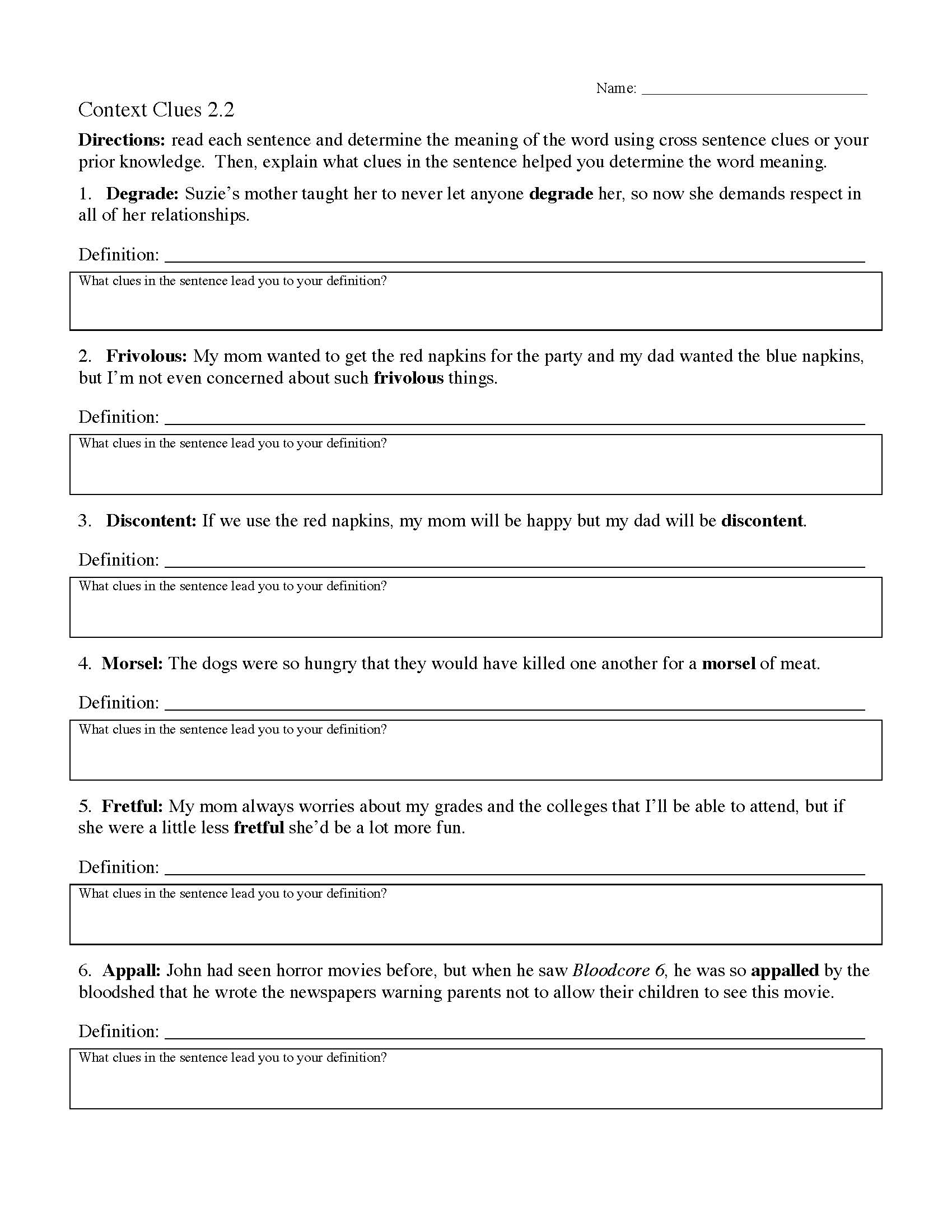




Here is another level-two context clues worksheet. It contains twelve problems with context rich sentences. Students use the cross sentence clues to determine the meaning of the bolded word and explain their answers.





Here is another double-sided context clues worksheet. This one has twelve more level one vocabulary words. Remember, level one is the easiest. Check out level 2 or 3 if this worksheet is too easy.





Here is another level-two context clues worksheet. It has twelve problems to help you or your students master this essential reading skill. Read the problems. Figure out what the bold vocabulary word means based on the context of the sentence and then explain.





This is the sixth context clues worksheet in level two. As with the other context clues worksheets, it is double-sided and contains twelve problems. Students will determine the meaning of the bolded word in each sentence based on context. Then they will explain their answers.





Here is the final level-two context clues worksheet. If you or your students can complete this one, perhaps it is time to move to level three. This worksheet is double-sided and contains twelve problems.Students read the sentences and figure out what the bold word means based on context. Then they explain their answers.





These are the most difficult context clues worksheets. These were designed for students with advance reading and vocabulary skills. These worksheets may be appropriate for students reading at an 8th to 12th grade level.
Context Clues Worksheet 3.1Here's the first level-three content clues worksheet. This worksheet features twelve challenging problems where students figure out the bold word's meaning based on the context of the sentence. Students also demonstrate higher order thinking skills by explaining their answers.





Here's another level-three content clues worksheet. This worksheet features twelve more challenging problems where students use cross-sentence clues to determine the meaning of unfamiliar vocabulary words. Then they explain their answers.





Here is yet another level three context clues worksheet. It has 12 challenging vocabulary words in context rich sentences. Students will determine the meaning of bold vocabulary words based on the context of each sentence. Then they will explain their answers.
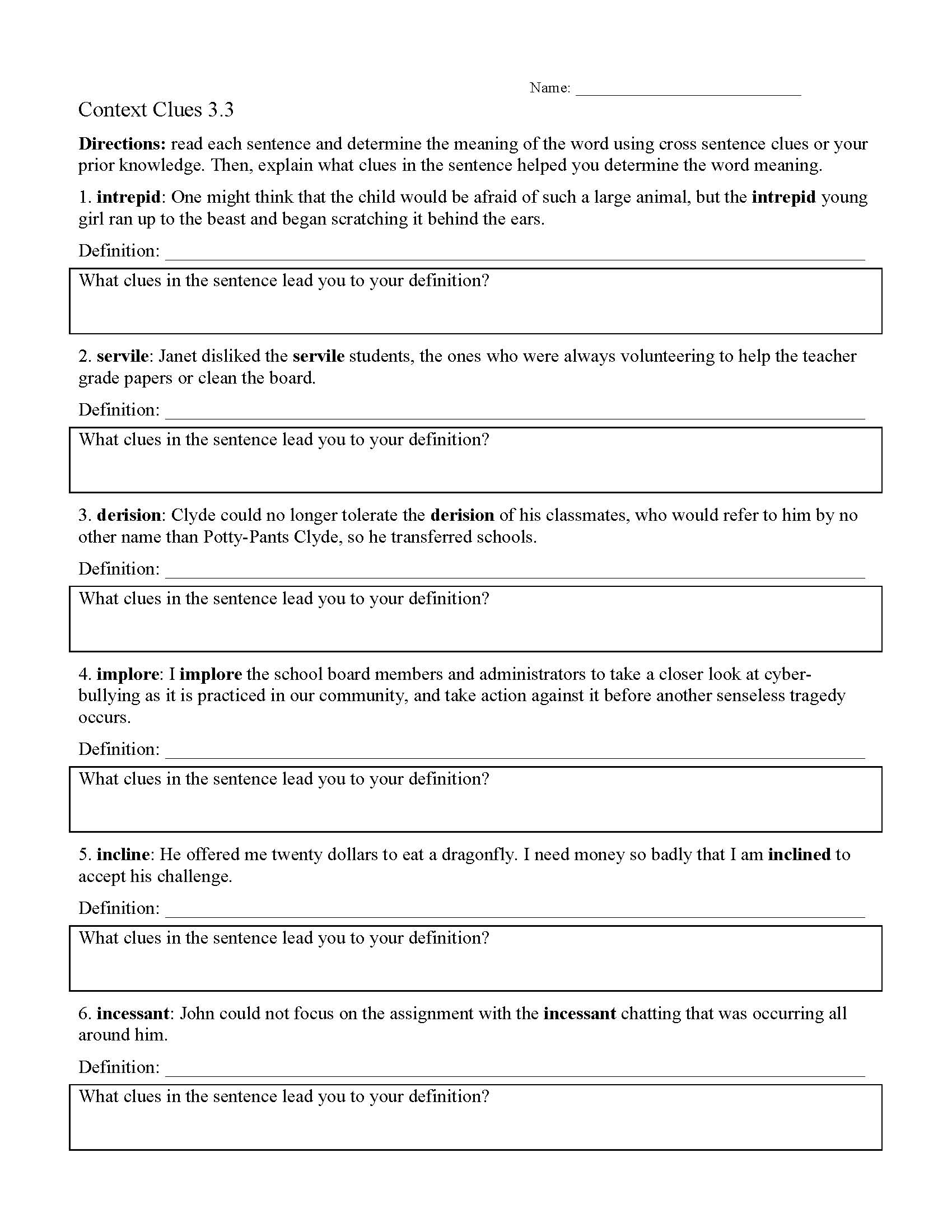




Here is still another level-three context clues worksheet. Level-three vocabulary sheets are the most challenging. This worksheet features 12 more challenging vocabulary words used in context-rich sentences. Students will identify the meaning of the bolded vocabulary word based on the cross sentence clues and explain their answers.
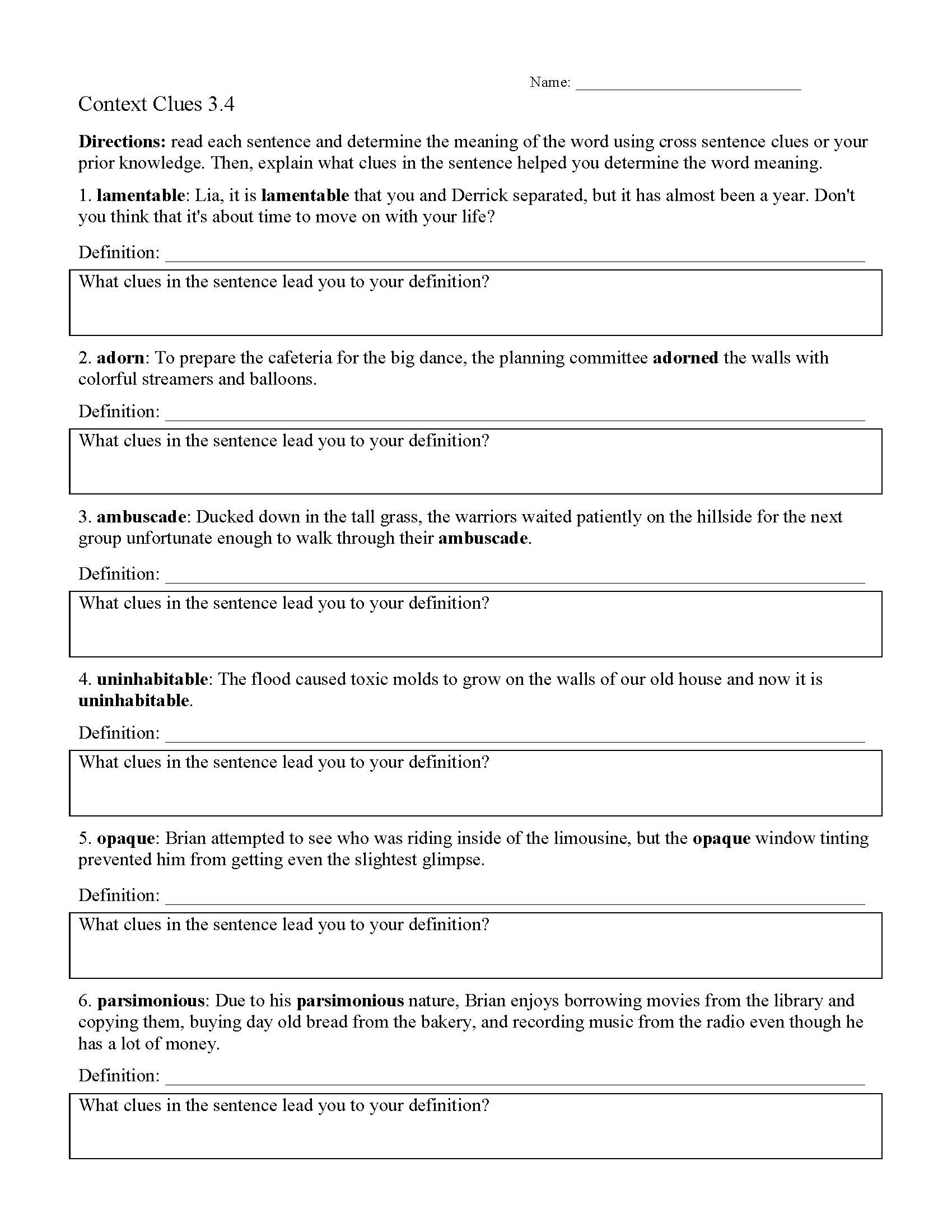




Just in case you didn't have enough practice with context clues, here is another double-sided worksheet. There are some real head scratchers on this one, but the context rich sentences will help you determine the meanings of the bolded words.





Here's the first level-three content clues worksheet. This worksheet features twelve challenging problems where students figure out the bold word's meaning based on the context of the sentence. Students also demonstrate higher order thinking skills by explaining their answers.





This is the seventh level-three context clues worksheet. Students who correctly complete this have mastered the skill of using context clues to determine the meaning of unfamiliar vocabulary words. You should probably start assigning them some other reading work. This worksheet has twelve challenging problems. Students figure out the bold word's meaning based on the context of the sentence. They also explain their answers.





Context clues are hints in the sentence that help good readers figure out the meanings of unfamiliar words. When we look at the "context" of a word, we look at how it is being used. Based on how these words are used, and on our knowledge of the other words in the sentence, we make an educated prediction as to what the challenging vocabulary word may mean.
Examine these lines from Lewis Carroll's poem, "Jabberwocky":
Beware the Jubjub bird, and shunJubjub, frumious, and Bandersnatch were NOT words before Carroll coined them. Yet readers are able to get meaning from them based on how the words are used. A reading of the whole poem is helpful way to introduce context clues to your students.
Are your students sick of vocabulary worksheets? Have them try this fun, high-interest computer game. Students climb to the tops of levels and answer over 500 vocabulary questions. They will be having so much fun, they won't even realize that they are studying vocabulary. Try it now!


R.4 - Interpret words and phrases as they are used in a text, including determining technical, connotative, and figurative meanings, and analyze how specific word choices shape meaning or tone.
RI.K.4 - With prompting and support, ask and answer questions about unknown words in a text.
RI.1.4 - Ask and answer questions to help determine or clarify the meaning of words and phrases in a text.
RI.2.4 - Determine the meaning of words and phrases in a text relevant to a grade 2 topic or subject area.
RI.3.4 - Determine the meaning of general academic and domain-specific words and phrases in a text relevant to a grade 3 topic or subject area.
RI.4.4 - Determine the meaning of general academic and domain-specific words or phrases in a text relevant to a grade 4 topic or subject area.
RI.5.4 - Determine the meaning of general academic and domain-specific words and phrases in a text relevant to a grade 5 topic or subject area.
RI.6.4 - Determine the meaning of words and phrases as they are used in a text, including figurative, connotative, and technical meanings.
RI.7.4 - Determine the meaning of words and phrases as they are used in a text, including figurative, connotative, and technical meanings; analyze the impact of a specific word choice on meaning and tone.
RI.8.4 - Determine the meaning of words and phrases as they are used in a text, including figurative, connotative, and technical meanings; analyze the impact of specific word choices on meaning and tone, including analogies or allusions to other texts.
RI.9-10.4 - Determine the meaning of words and phrases as they are used in a text,including figurative, connotative, and technical meanings; analyze the cumulative impact of specific word choices on meaning and tone (e.g., how the language of a court opinion differs from that of a newspaper).
RI.11-12.4 - Determine the meaning of words and phrases as they are used in a text, including figurative, connotative, and technical meanings; analyze how an author uses and refines the meaning of a key term or terms over the course of a text (e.g., how Madison defines faction in Federalist No. 10).
L.4 - Determine or clarify the meaning of unknown and multiple-meaning words and phrases by using context clues, analyzing meaningful word parts, and consulting general and specialized reference materials, as appropriate.
L.K.4 - Determine or clarify the meaning of unknown and multiple-meaning words and phrases based on kindergarten reading and content.
L.1.4a - Use sentence-level context as a clue to the meaning of a word or phrase.
L.2.4a - Use sentence-level context as a clue to the meaning of a word or phrase.
L.3.4 - Determine or clarify the meaning of unknown and multiple-meaning word and phrases based on grade 3 reading and content, choosing flexibly from a range of strategies.
L.4.4a - Use context (e.g., definitions, examples, or restatements in text) as a clue to the meaning of a word or phrase.
L.5.4 - Determine or clarify the meaning of unknown and multiple-meaning words and phrases based on grade 5 reading and content, choosing flexibly from a range of strategies
L.6.4a - Use context (e.g., the overall meaning of a sentence or paragraph; a word's position or function in a sentence) as a clue to the meaning of a word or phrase.
L.7.4 - Determine or clarify the meaning of unknown and multiple-meaning words and phrases based on grade 7 reading and content, choosing flexibly from a range of strategies.
L.8.4 - Determine or clarify the meaning of unknown and multiple-meaning words or phrases based on grade 8 reading and content, choosing flexibly from a range of strategies.
L.9-10.4a - Use context (e.g., the overall meaning of a sentence, paragraph, or text; a word's position or function in a sentence) as a clue to the meaning of a word or phrase.
L.11-12.4 - Determine or clarify the meaning of unknown and multiple-meaning words and phrases based on grades 11–12 reading and content, choosing flexibly from a range of strategies.